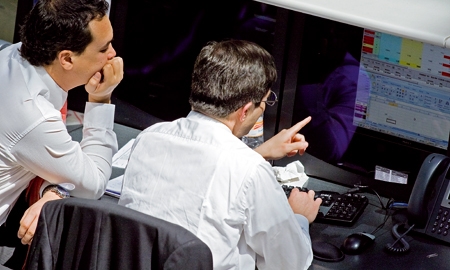Mexico’s open economy is packed with potential. Its estimated 2011 GDP of US$1.657 trillion makes it the 12th largest in the world, and the second biggest economy in Latin America, after Brazil.
As an export-oriented economy, international trade is vital to the nation’s finances. The North American Free Trade Agreement (NAFTA) that was implemented in 1994 has helped see three-way trade among Mexico, Canada and the U.S. reach US$1 trillion and support 2.5 million American jobs. In April, President Barack Obama said the three nations were launching a new bid to pare back regulation in hopes of further boosting trade and creating more jobs in all three countries, stating: “Our integration helps maximize our capabilities and makes our economies more innovative and competitive globally. Working together, we strive to ensure that North American economic cooperation fosters gains in productivity for all of our citizens, enhancing our respective national and bilateral efforts to achieve that goal.”
The U.S. is Mexico’s most important trade and investment partner. The US$400 billion-worth of trade in 2010 made Mexico America’s biggest trading partner after China and Canada. The U.S. is also home to around 13 million people of Mexican roots, whose remittances greatly aid Mexico’s economy. In total, remittances by Mexicans working overseas (mainly in the U.S.) represent around US$2 billion per month and are on the rise, growing by 10.4% last August. The U.S. Bureau of Labor Statistics states that between November 2010 and November 2011, Hispanics (of which Mexicans constitute two-thirds) accounted for 39% of total job creation in the U.S.
Mexico trades more than Argentina and Brazil combined, and more per head than China |
Such close links meant Mexico was particularly hit hard by the economic slowdown in the U.S., suffering more than other countries in the region. Its economy shrank by 6.1% in 2009, and 700,000 jobs were lost between the third quarter of 2008 and the second quarter of 2009, 260,000 of them being in manufacturing.
Nevertheless, reforms undertaken by the government over the past decade, such as reducing public debt levels, introducing a balanced budget rule and an inflation targeting framework, as well as the clear commitment to the free float of the peso, helped Mexico weather the global crisis.
GDP rebounded to positive growth of 5.4% in 2010 and 3.8% last year, with The Economist forecasting 3.1% and 3.9% for 2012 and 2013 respectively. Consumption and investment by private industry are expected drive growth this year. Inflation – which has mostly been contained through disciplined fiscal management and averaged 3.4% in 2011 – is predicted to remain within the 2-4% target range.
In addition to the NAFTA, Mexico also has a string of other bilateral deals on the go that are buoying its economy. It has a network of 11 free trade agreements (FTAs) covering 43 countries, including Guatemala, Honduras, El Salvador, Japan, and the European Free Trade Area – putting more than 90% of its trade under FTAs. In fact Mexico trades more than Argentina and Brazil combined, and more per head than China.
Mexico also has six Economic Complementation Agreements, and has signed 25 Investment Promotion and Protection Agreements (IPPAs), which promote legal protection of capital flows to the productive sector and are designed to foster foreign investors’ confidence in Mexico. Furthermore, it has negotiated Double Taxation (DT) treaties – which prevent taxation by two or more countries on the same income, asset or transaction – with at least 31 countries.
Having trade agreements across three continents, Mexico stands out as a gateway to a potential market of over 1 billion consumers and 60% of the world GDP.
The government has been making efforts to boost consumer spending and construction activity. On November 18, President Calderon launched the ‘El Buen Fin’ (‘The Good Weekend’) initiative, which was similar to ‘Black Friday’ in the U.S., where retailers offered a weekend of special discounts, in the region of 10-50%, to lure customers into their shops. The government has also devised finance programs to help low-income workers obtain mortgages to buy their own homes. Analysts suggest the scheme could increase home purchases by 20,000 in 2012.
In April, Mexican consumer confidence leapt to its highest level in four years, reflecting a renewed optimism for the country’s economic outlook and representing a good sign for domestically driven growth. Reuters reports that the component of the consumer confidence index that measures the likelihood of buying costly durable goods surged more than 22% compared to April last year, underscoring improving consumer credit and a recovery in the peso’s exchange rate.

0 COMMENTS